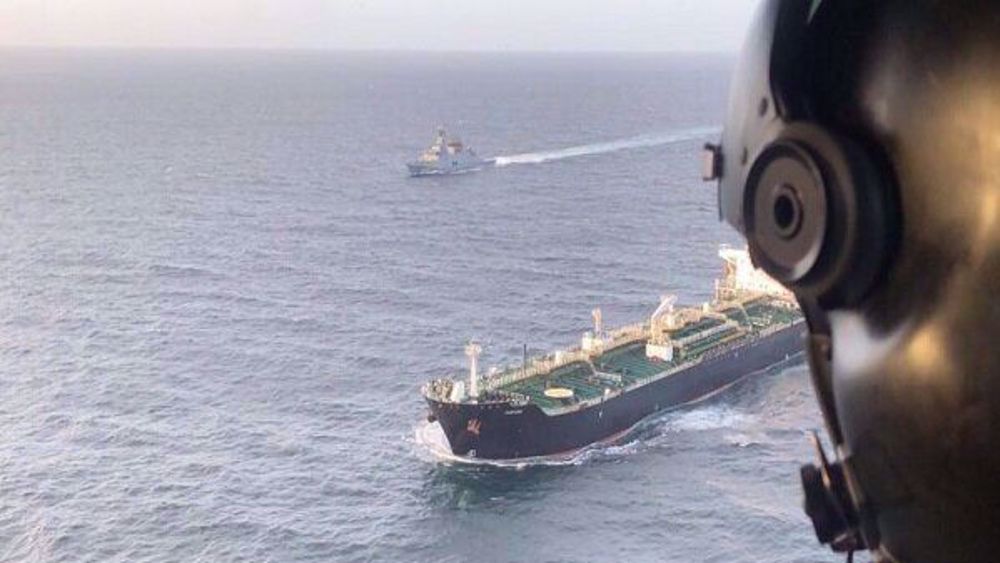America’s problem-plagued F-35 jets hit with new issue
The US military’s fleet of F-35 stealth aircraft will miss the 80-percent readiness goal set by former Defense Secretary James Mattis for 2019, a new report has revealed.
Acting Pentagon chief Mark Esper, Trump’s nominee to replace Mattis, told a Senate hearing recently that America’s fleet of roughly 300 F-35s, operated by the US Air Force, Navy and Marine Corps “is not expected” to reach Mattis’ readiness goal by September 2019, which he set before quitting his position in protest to President Donald trump’s foreign policy.
Esper blamed the issue of “transparency” for pilots as the main reason behind the issue, referring to the aircraft canopies, according to the National Interest.
“Transparency supply shortages continue to be the main obstacle to achieving this,” Esper told the congressional committee. “We are seeking additional sources to fix unserviceable canopies.”
The Government Accountability Office (GAO) had warned about the canopy shortage for the F-35s in an April report.
The F-35 uses specially designed canopies with anti-radar coating that prevent radar waves from bouncing off the inside of the cockpit.
The canopies “failed more frequently than expected,” the GAO pointed out in its assessment.
Lockheed Martin Co, the company making the F-35, has been searching for additional subcontractors to help boost canopy-production, according to the report.
The canopy issue is also expected to affect the US Air Force’s F-22 stealth fighters, Air Force brigadier general Heath Collins, the service’s program executive officer for fighters and bombers, said in June.
The failure comes even as the Air Force funneled $750 million into maintenance accounts for the F-22 and F-16 fleets in 2018 and 2019 to meet Mattis’s goal.
The F-22’s complex systems and delicate, radar-absorbing coating require intensive maintenance. The F-35 is proving equally hard to keep in the air.
The F-35’s readiness has long been affected by various technical issues. A series of military documents obtained by Defense News in June detailed a wide range of serious problems with two of the three versions of the F-35.
According to the documents, the Marine Corps’ vertical-landing F-35B and the Navy’s aircraft carrier-compatible F-35C both face what the services call “category 1” deficiencies, which in military term means they can prevent a pilot from accomplishing their mission.
One major problem was spotted during test flights in 2011, where at least one F-35B sustained “bubbling [and] blistering” of its stealth coating during tests.
The F-35C faced structural damage later that year resulting from the extreme heat produced by the plane’s single engine, one of the most powerful fighter jet engines ever made.
The problems have led the Pentagon to instruct F-35B and F-35C pilots to fly at supersonic speed for less than a minute at a time.
The test reports Defense News obtained reveal a second category-1 deficiency in the F-35B and F-35C aircraft.
Apparently, if during a steep climb the pilot chooses an “angle of attack” — the angle created by the wing and the oncoming air — beyond exceed 20 degrees, they fighter jet could become unstable and potentially uncontrollable.
Iran condemns G7 hypocrisy on human rights following interventionist statement
VIDEO | Death behind bars: Gaza’s prisoners. silence surrounding them
60,000 weapons bound for Tehran seized as Mossad-trained terror cell busted
VIDEO | 13th day of war
Israeli strikes kill two in Lebanon as UNIFIL warns against ceasefire violations
Trump threatens to slap tariffs on countries opposed to US Greenland takeover
VIDEO | Press TV's news headlines
VIDEO | Iran: A make-or-break moment?











 This makes it easy to access the Press TV website
This makes it easy to access the Press TV website